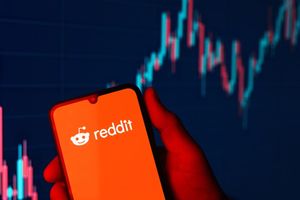
The global economy is grappling with a significant shift in the landscape of consumer price inflation. While initial surges in inflation were largely attributed to supply chain disruptions and elevated energy costs impacting goods, the narrative has fundamentally changed. Today, the sticky, persistent nature of inflation is predominantly a services-led phenomenon, with housing, wage growth, and specific service sectors emerging as the primary culprits. This divergence carries profound implications for central bank policy, consumer purchasing power, and the broader economic outlook, signaling a more entrenched battle against rising prices than initially anticipated.
The Services Sector's Grip: Why It Matters Now More Than Ever
For much of 2022 and early 2023, discussions around inflation centered on the price of tangible goods—from electronics to automobiles—heavily influenced by pandemic-induced supply chain bottlenecks and geopolitical events impacting energy markets. However, as of mid-2025, a stark contrast has emerged: goods inflation has largely moderated, while services inflation remains stubbornly high, creating a significant challenge for policymakers aiming to achieve price stability.
In the Euro area, for instance, services inflation stood at a robust 3.7% in February 2025, dramatically overshadowing non-energy industrial goods (NEIG) inflation at 0.6%. This 3.1 percentage point gap is not only exceptionally wide by historical standards but also significantly above pre-pandemic averages, underscoring the severity of the trend. The United Kingdom tells a similar story, with CPIH services annual inflation at 5.2% in July 2025, compared to CPIH goods annual inflation at 2.7%.
The primary drivers within the services sector are clear. Housing costs, encompassing shelter and rent, are consistently the largest contributor to services inflation, particularly in the United States. From August 2024 to August 2025, housing price increases accounted for three-fifths of the overall U.S. inflation rate, with prices 4.0% higher year-over-year. In July 2025, shelter alone constituted roughly half (48%) of the increase in the U.S. Consumer Price Index (CPI). Beyond housing, persistent wage growth is a critical factor. Unlike goods, which benefited from the unwinding of external cost shocks, services are heavily reliant on labor, making them more susceptible to sustained increases in wages. This creates a challenging feedback loop where higher wages lead to higher service prices, which in turn can fuel demands for further wage increases. Other notable contributors include medical care costs (hospital and dental services), airfare, and food away from home. Motor vehicle insurance, in particular, has seen substantial increases, significantly impacting transportation inflation.
Conversely, goods inflation has seen a more significant deceleration. Goods were more sensitive to the faster-moving external cost factors like supply chain disruptions and energy price spikes, which have largely dissipated. This allowed for a quicker disinflationary process in the goods sector. In the U.S., core goods prices (excluding food and energy) even fell in October 2024, and gasoline prices saw a 14.4% year-over-year decline by March 2025. This dichotomy highlights a crucial point: the initial drivers of inflation have receded, only to be replaced by more structural, domestically-driven pressures within the services economy.
Shifting Fortunes: Who Wins and Who Loses in a Services-Led Inflation Environment
The pivot to services-driven inflation creates a distinct set of winners and losers across the market, challenging companies to adapt their strategies in an evolving economic landscape.
Potential Winners: Companies in sectors less susceptible to rising labor costs or those that can efficiently pass on increased costs to consumers are likely to fare better.
- Housing and Real Estate (e.g., Invitation Homes (NYSE: INVH), Equity Residential (NYSE: EQR)): As shelter costs continue to rise, landlords and real estate investment trusts (REITs) focused on residential properties can benefit from higher rental income. However, they also face rising property management and maintenance costs, which can temper gains.
- Healthcare Providers (e.g., UnitedHealth Group (NYSE: UNH), Elevance Health (NYSE: ELV)): With medical care costs contributing to inflation, healthcare service providers may see increased revenue. Insurers might also benefit from higher premiums, though they also contend with rising claims costs.
- Insurance Companies (e.g., Progressive (NYSE: PGR), Allstate (NYSE: ALL)): Particularly auto insurers, which have seen significant increases in premiums due to higher repair costs and claims, can benefit from their ability to adjust pricing.
- Companies with Strong Pricing Power: Businesses that offer essential or highly differentiated services and can easily pass on higher labor and operational costs to consumers without significant demand destruction. This might include certain specialized consulting firms or essential utilities.
Potential Losers: Businesses with high labor intensity, limited pricing power, or those catering to discretionary goods consumption are likely to face significant headwinds.
- Labor-Intensive Service Industries (e.g., Hospitality, Restaurants, Retail (e.g., Starbucks (NASDAQ: SBUX), McDonald's (NYSE: MCD)): These sectors are directly impacted by rising wages, which can erode profit margins if not fully offset by price increases. Consumers, facing higher costs elsewhere, may also cut back on discretionary spending like dining out or travel.
- Manufacturing and Goods Retailers (e.g., Walmart (NYSE: WMT), Target (NYSE: TGT)): While goods inflation has moderated, sustained high services inflation erodes overall consumer purchasing power, potentially leading to reduced demand for non-essential goods. Manufacturers also face higher transportation and logistics costs, which are service-driven.
- Discretionary Service Providers: Businesses offering non-essential services that consumers can easily cut back on when their budgets are strained by rising housing, insurance, and medical costs. This could include entertainment venues, gyms, or certain leisure activities.
- Companies Relying on Debt Financing: With central banks likely to keep interest rates higher for longer to combat sticky services inflation, businesses heavily reliant on borrowing for growth or operations will face increased financing costs.
The uneven impact means that companies must rigorously manage their cost structures, particularly labor expenses, and carefully assess their pricing strategies to maintain profitability.
Broad Implications: A New Era for Economic Policy and Market Dynamics
The sustained dominance of services in driving consumer price inflation is not merely a statistical anomaly; it signals a fundamental shift in economic dynamics with wide-ranging implications for industry trends, regulatory responses, and historical comparisons.
This event fits into broader industry trends emphasizing the increasing "servicification" of modern economies. As manufacturing has become more efficient and globalized, a larger share of economic activity in developed nations has shifted towards services. This makes inflation in this sector particularly impactful and challenging. The persistence of wage growth as a key driver also highlights a tighter labor market, a trend observed globally, where demographic shifts and a lingering hesitancy to return to certain labor-intensive roles post-pandemic are contributing factors. This dynamic can create ripple effects on competitors and partners, as rising labor costs in one service sector can put upward pressure on wages in others, leading to a broader inflationary cycle.
From a regulatory and policy perspective, this services-led inflation places central banks in a difficult position. Unlike goods inflation, which can often be addressed by resolving supply chain issues or managing commodity prices, services inflation, deeply tied to domestic wage growth and consumer demand, is considered "stickier" and less responsive to interest rate hikes. This suggests that central banks, like the U.S. Federal Reserve and the European Central Bank, may be compelled to maintain higher interest rates for a longer duration than previously anticipated, increasing the risk of an economic slowdown or recession. Governments might also face pressure to implement targeted policies, such as rental assistance or subsidies for essential services, to alleviate the burden on consumers, though such measures could also be inflationary if not carefully managed.
Historically, periods of persistent services inflation have often been more challenging to tame. Unlike the commodity-driven inflation of the 1970s or the more recent supply-shock inflation, a services-led scenario implies a deeper entrenchment of inflationary expectations within the labor market and consumer psyche. Comparing this to the post-World War II boom or other periods of sustained economic growth, the current environment is unique in its focus on the services sector, which now represents a larger proportion of GDP in many developed countries. This suggests that the tools and strategies that worked in previous inflationary cycles may need to be re-evaluated or supplemented. The implications are clear: a sustained period of higher interest rates could impact everything from mortgage rates to business investment, reshaping the competitive landscape across industries.
What Comes Next: Navigating the Persistent Price Challenge
The trajectory of services-led inflation will dictate much of the economic narrative in the coming months and years, presenting both significant challenges and emerging opportunities.
In the short-term, central banks are likely to remain hawkish, prioritizing inflation containment over growth stimulation. This means the expectation of interest rate cuts might be continually pushed back, maintaining pressure on borrowing costs for businesses and consumers. We could see continued moderation in goods prices as global supply chains stabilize further, but this disinflationary trend will likely be overshadowed by persistent rises in essential services. Strategic pivots for businesses will center on labor cost management, efficiency improvements through technology adoption (e.g., automation in customer service or logistics), and selective price increases where market elasticity allows. Consumers will continue to face squeezed budgets, potentially leading to a bifurcation in spending: continued strong demand for essential services (even at higher prices) and a pullback in discretionary goods and services.
Looking to the long-term, the implications are more profound. If services inflation proves exceptionally stubborn, it could lead to a structural reset in inflation expectations, making it harder for central banks to achieve their 2% targets without more drastic measures. This could foster an environment where "higher for longer" interest rates become the new normal, impacting long-term investment decisions, corporate financing, and even pension fund returns. Market opportunities may emerge for companies offering innovative, cost-effective solutions in labor-intensive service sectors, or those providing services that enhance productivity. Conversely, industries heavily reliant on cheap credit or high consumer discretionary spending could face sustained headwinds. Potential scenarios range from a "soft landing" where services inflation gradually cools without a severe recession, to a more challenging "hard landing" if aggressive monetary tightening pushes economies into a deep downturn. Another scenario involves a prolonged period of "stagflation," where high inflation coexists with sluggish economic growth.
The key adaptations required will involve businesses investing in automation and AI to reduce reliance on expensive labor, exploring reskilling initiatives, and optimizing supply chains for services delivery. Governments and policymakers will need to consider structural reforms that address housing supply shortages and improve labor market flexibility, alongside monetary policy. The persistent nature of services inflation fundamentally alters the risk-reward calculus for investors and demands vigilance from all economic actors.
Conclusion: A New Inflationary Era Demands Strategic Foresight
The current economic landscape is unequivocally marked by services, rather than goods, as the primary engine of consumer price inflation. This shift represents a crucial turning point, moving beyond the transient supply-side shocks that initially fueled price surges to a more deeply entrenched inflationary pressure driven by domestic factors like housing costs and robust wage growth. The disinflationary process in goods has largely run its course, leaving central banks with the challenging task of taming sticky services prices.
The immediate and long-term implications are substantial. For central banks, it means a likely continuation of a cautious and potentially tighter monetary policy stance, with interest rates remaining elevated for a longer duration than many anticipated. For consumers, the ongoing rise in essential service costs, from shelter to insurance and healthcare, continues to erode purchasing power, particularly for lower-income households, and will inevitably influence discretionary spending patterns. Businesses, especially those in labor-intensive service sectors, face ongoing pressure on profit margins, necessitating strategic adaptations in cost management, technology adoption, and pricing power.
Moving forward, investors should closely monitor several key indicators. Wage growth data, particularly in service industries, will be paramount. Housing market trends, including rent inflation and new housing supply, will also offer critical insights. Central bank communications, speeches, and minutes will provide clues regarding their commitment to combating services inflation and their outlook on interest rate policy. Furthermore, tracking consumer spending patterns, especially the bifurcation between essential and discretionary categories, will be crucial for understanding demand dynamics. The era of services-led inflation demands heightened strategic foresight from all stakeholders, as it shapes not just the next few quarters, but potentially the longer-term structure of the global economy.





